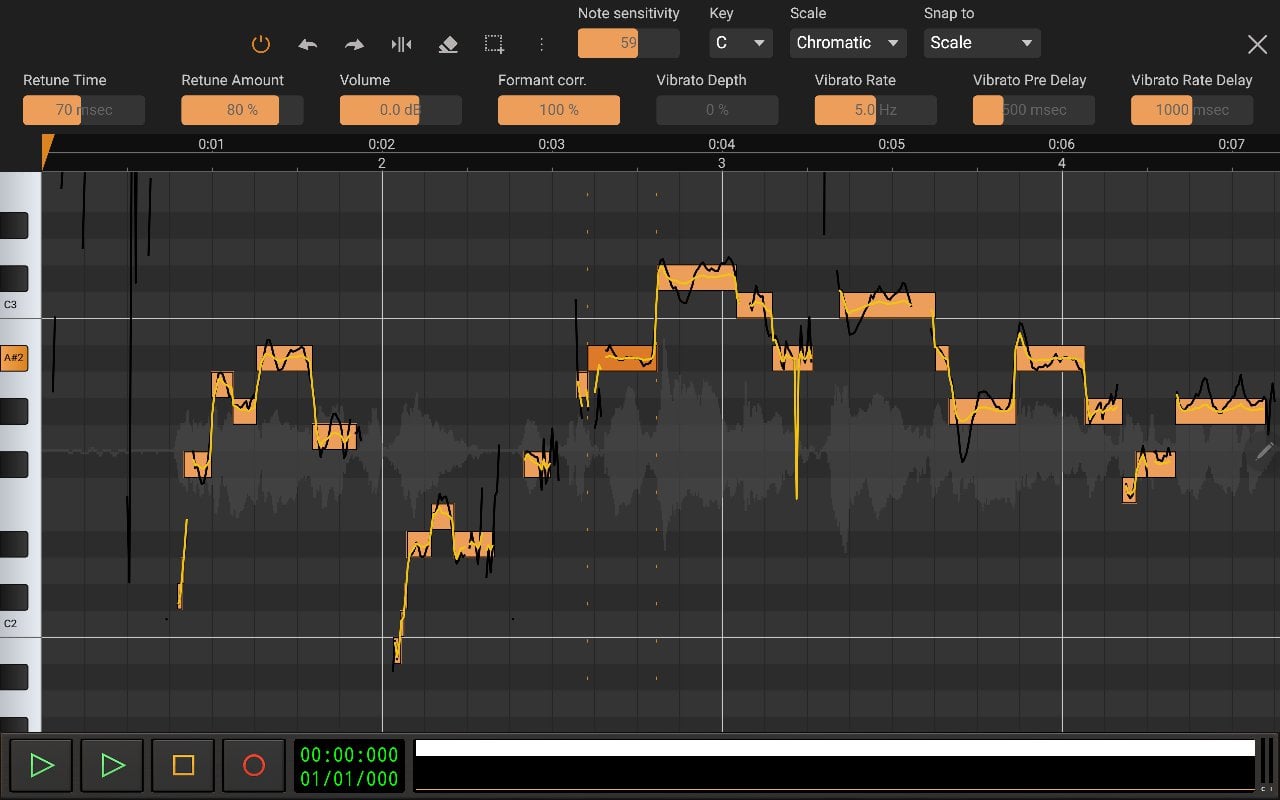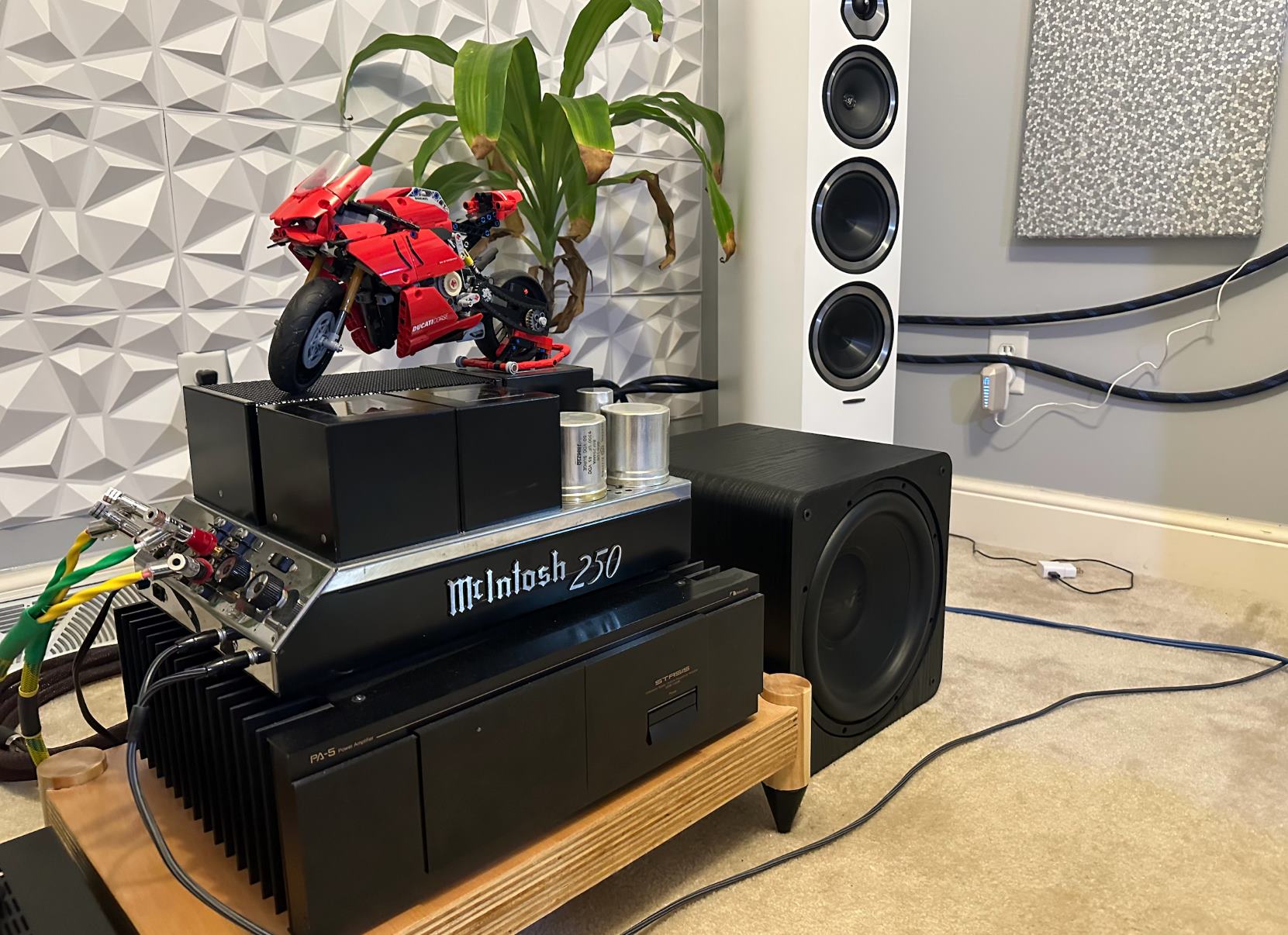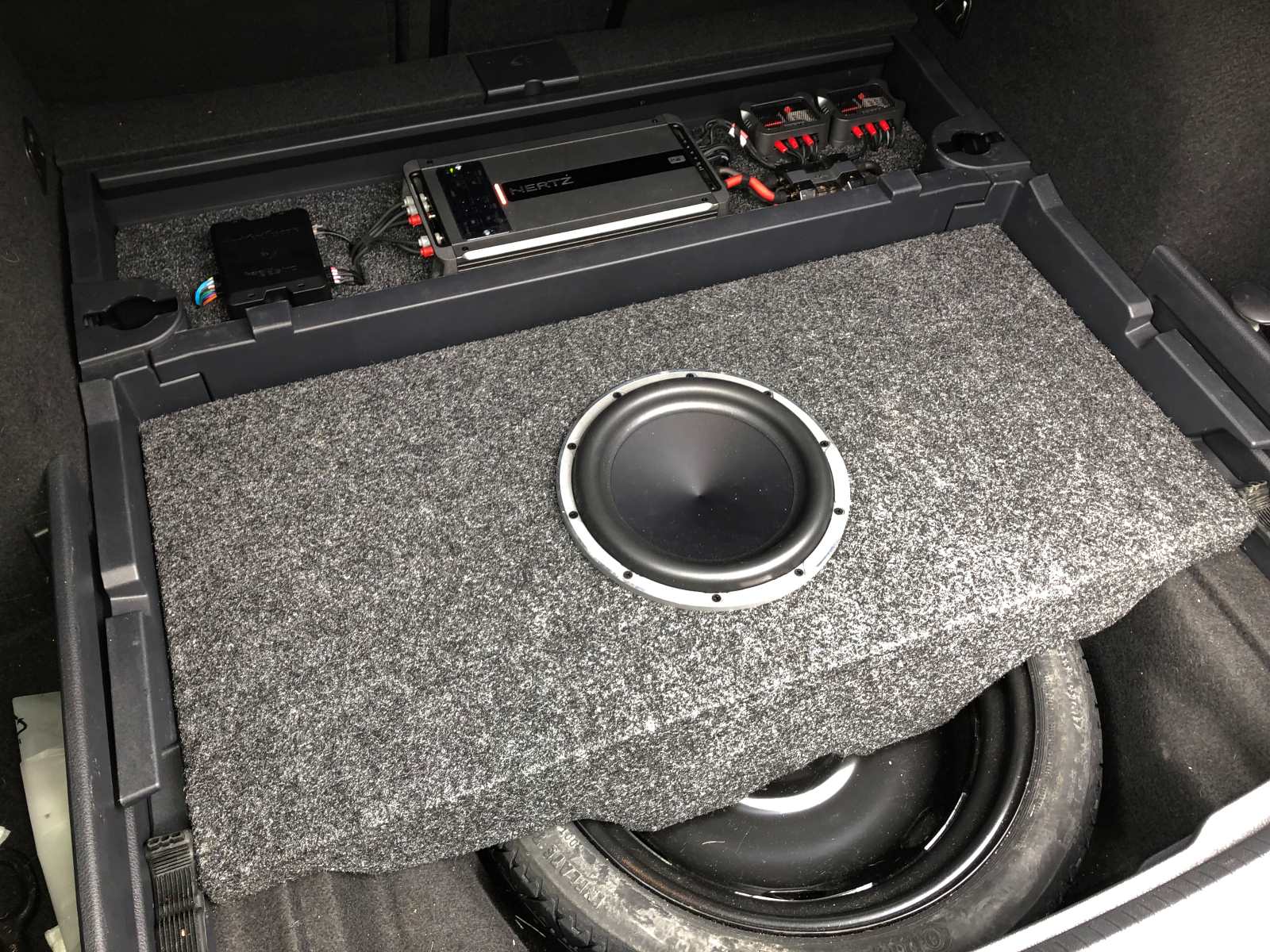Home>Events & Info>Acapella>How To Manually Tune Acapella


Acapella
How To Manually Tune Acapella
Published: January 3, 2024
Discover how to manually tune acapella vocals for crystal-clear harmonies. Unlock the secrets of perfect pitch adjustment with our step-by-step guide.
(Many of the links in this article redirect to a specific reviewed product. Your purchase of these products through affiliate links helps to generate commission for AudioLover.com, at no extra cost. Learn more)
Table of Contents
Introduction
Acapella music has a mesmerizing quality that captivates listeners with its pure vocal harmonies and captivating melodies. Whether you’re a singer, producer, or just a music enthusiast, the ability to manually tune acapella tracks can enhance the overall sound quality and create a more polished and professional result.
In this article, we will explore the step-by-step process of manually tuning an acapella track. By following these techniques, you can adjust the pitch, tempo, and timing to achieve the desired sound. Whether you’re looking to correct minor imperfections or completely transform the acapella, mastering these tuning techniques will help take your acapella productions to the next level.
Before we dive into the specific steps, it’s important to note that manual tuning requires a good ear, attention to detail, and patience. It may take some time and practice to achieve the desired results, but the effort is well worth it.
So, let’s get started and learn how to manually tune an acapella track!
Step 1: Select the Acapella Track
The first step in manually tuning an acapella track is to carefully select the acapella you want to work with. It’s essential to choose a high-quality acapella that is well-recorded and free from excessive background noise or distractions.
When selecting an acapella, consider the following:
- Quality: Look for acapellas that have been professionally recorded or extracted from high-quality sources. This will ensure that the vocals are clean and clear, making the tuning process easier and more effective.
- Isolation: Make sure the acapella track is properly isolated, meaning that it only contains vocals with no accompanying music or other sounds. This will allow you to focus solely on tuning the vocals and avoid any interference from background instruments or noises.
- Compatibility: Consider the genre and style of your music production. Choose an acapella that fits well with the overall sound and vibe of your project. This will make it easier to integrate the tuned vocals into your final mix.
Additionally, it’s important to have the necessary rights and permissions to use the acapella track in your project. Make sure to obtain the appropriate licenses or seek permission from the original artist or rights-holder before proceeding with any modifications or alterations.
Once you have selected the ideal acapella track, you’re ready to move on to the next step of manually tuning the vocals.
Step 2: Identify the Key of the Acapella
Before you can begin tuning the acapella track, it’s crucial to identify the key in which the vocals are sung. The key determines the fundamental pitch of the track and serves as a reference point for tuning adjustments.
Here are a few methods to help you determine the key of the acapella:
- Use your ear: Listen carefully to the acapella track and try to identify the predominant note or tonic. By using your musical intuition and knowledge, you can try to match the key by playing different chords or notes on a musical instrument or virtual piano.
- Online tools: There are several online tools and mobile apps available that can assist in identifying the key of a song. These tools analyze the musical notes and provide you with the most likely key based on the recorded vocals.
- Musical theory: If you have a good understanding of musical theory, you can analyze the melodic structure and chord progression of the acapella to determine the key. Look for recurring patterns and cadences that can give you insights into the underlying tonality.
Once you have identified the key, it’s important to note it down for reference throughout the tuning process. This will help you make accurate adjustments to the pitch and ensure that the vocals are in harmony with the rest of your music composition.
Remember, identifying the key correctly is crucial for achieving a polished and harmonically aligned acapella track. Take the time to ensure accuracy in this step before moving on to the next.
Step 3: Analyze the Vocal Range
Once you have identified the key of the acapella, the next step is to analyze the vocal range of the singer. Understanding the range will help you make informed tuning decisions and ensure that the vocals sound natural and well-balanced.
Here’s how you can analyze the vocal range:
- Listen attentively: Take the time to listen to the acapella track carefully. Pay attention to the highest and lowest notes the vocalist sings throughout the performance. This will give you insights into their vocal range.
- Identify the comfortable range: Note the range in which the vocalist sounds the most comfortable and strong. This will serve as a guideline for tuning adjustments, making sure that you don’t push the vocals beyond their capabilities.
- Consider the style of the song: Different genres and styles of music may require vocals to be tuned differently. If you’re working on a pop or R&B track, for example, you may want to achieve a more polished and precise sound. On the other hand, if you’re working on a folk or indie track, you may allow for more natural variations in pitch.
By analyzing the vocal range, you’ll gain a better understanding of the limitations and strengths of the singer’s voice. This knowledge will help you make informed tuning decisions and create a more cohesive and balanced acapella track.
Remember, the goal of tuning is to enhance the vocals while maintaining their unique character and style. Be mindful not to over-tune or manipulate the vocals to the point where they lose their authenticity.
Step 4: Adjust the Pitch
With the key and vocal range identified, it’s time to begin adjusting the pitch of the acapella track. Pitch correction is one of the most crucial steps in tuning, as it ensures that the vocals are in tune with the rest of the music.
Here’s how you can adjust the pitch:
- Use pitch correction software: There are various pitch correction plugins and software available that can assist in adjusting the pitch of the vocals. These tools allow you to manually or automatically correct any out-of-tune notes. Experiment with different settings and algorithms to find the most natural and pleasing result.
- Make small corrections: When adjusting the pitch, it’s essential to make small, incremental changes. It’s rare for a vocalist to sing every note perfectly in tune, so your goal is to fine-tune the vocals to improve their overall pitch accuracy without sacrificing their natural characteristics.
- Focus on problematic areas: Pay close attention to parts of the track where the vocalist consistently misses the pitch. These areas may require more attention and fine-tuning. Use tools like pitch bends or manual pitch adjustments to bring those notes into alignment with the desired melody.
As you adjust the pitch, it’s important to regularly listen to the track to ensure that the vocals sound natural and coherent. Continuously check the relationship between the vocals and the backing music to maintain a harmonious and balanced sound.
Remember, the goal is not to completely remove all variations in pitch, as that can result in a robotic and unnatural sound. Instead, aim for a subtle and tasteful pitch correction that enhances the vocals while preserving their authentic quality.
Step 5: Modify the Tempo
Adjusting the tempo of the acapella track is an important step in the tuning process. It allows you to synchronize the vocals with the desired pace of your music production. Whether you want to speed up or slow down the vocals, modifying the tempo can help create a cohesive and well-integrated sound.
Here’s how you can modify the tempo:
- Understand the desired tempo: Determine the tempo at which you want the acapella to be synced with your music. Consider the genre and style of your production, as different tempos can drastically alter the mood and feel of the track.
- Use time-stretching techniques: Time-stretching is a common technique used to either shorten or lengthen the duration of audio without affecting its pitch. This allows you to adjust the tempo of the acapella without altering the overall pitch of the vocals. Utilize time-stretching plugins or software to achieve the desired tempo.
- Listen for artifacts: When modifying the tempo, be mindful of any artifacts or glitches that may occur. Extreme tempo changes can sometimes result in unnatural-sounding artifacts, such as robotic artifacts or loss of vocal clarity. Take the time to tweak and fine-tune the tempo adjustments to ensure a seamless and transparent transition.
It’s crucial to maintain a balance between the original performance and the tempo adjustments. Strive for a tempo that complements the vocals and enhances the overall musical experience.
Remember, modifying the tempo should be done with care and intention. The goal is to achieve a cohesive and natural flow between the vocals and the music, while maintaining the authenticity and integrity of the original vocal performance.
Step 6: Align the Timing
Now that you have adjusted the pitch and tempo of the acapella track, the next step is to align the timing. This involves making sure that the vocals are perfectly synchronized with the other elements of your music production.
Here are some techniques to help you align the timing:
- Grid-based editing: Most digital audio workstations (DAWs) have a grid-based editing feature that allows you to align the vocals to a precise rhythmic grid. This helps ensure that the vocals hit the desired beats and sync up with other musical elements. Use the grid to visually align the vocal phrases with the musical structure.
- Quantize the timing: If the vocals have subtle timing issues, you can use quantization techniques to tighten up the rhythmic accuracy. Quantization involves snapping the vocal notes to the nearest rhythmic value, such as quarter notes or eighth notes. However, be cautious not to over-quantize, as it can result in a robotic and unnatural sound. Use quantization as a tool to enhance the timing, while still preserving the natural feel of the vocal performance.
- Manual adjustments: In some cases, manual adjustments may be necessary to fine-tune the timing of specific vocal sections. Zoom in on the waveform and make small edits or nudges to align the vocals precisely with the desired musical elements. This level of attention to detail can greatly enhance the overall timing of the acapella track.
By aligning the timing of the vocals, you create a seamless and cohesive musical experience. The vocals will flow effortlessly with the other elements of your production, resulting in a professional and polished sound.
Remember, timing adjustments should be made with precision and sensitivity. Strive for a balance between rhythmic accuracy and maintaining the natural feel and groove of the vocal performance.
Step 7: Fine-tune the Melody
After adjusting the pitch, tempo, and timing of the acapella track, it’s time to fine-tune the melody. This step involves making subtle adjustments to ensure that the vocal melody is cohesive, cohesive with the backing music, and enhances the overall musical composition.
Here’s how you can fine-tune the melody:
- Smooth out transitions: Pay close attention to melodic transitions between different parts of the track, such as verses, choruses, and bridges. Smooth out any abrupt changes or pitch inconsistencies to achieve a more seamless and polished vocal performance.
- Correct pitch bends: If the vocalist incorporates pitch bends or slides in their performance, make sure to adjust them appropriately. Correct any pitch bends that are out of tune or not fitting with the desired melody. This will help maintain a cohesive and pleasing melodic flow.
- Refine phrasing and dynamics: Fine-tuning the melody also involves refining the phrasing and dynamics of the vocal performance. Pay attention to how the vocalist emphasizes certain words or phrases and adjust the timing and intensity accordingly. This will add depth and expression to the acapella track.
When fine-tuning the melody, it’s crucial to keep the original intent and style of the vocal performance in mind. The goal is to enhance the vocals while preserving the unique character and style of the singer.
Remember, subtlety is key when fine-tuning the melody. Focus on small adjustments that enhance the overall musicality and emotional impact of the acapella track.
Step 8: Enhance the Sound Quality
In the final step of manually tuning an acapella track, it’s time to enhance the sound quality. This involves applying various techniques and adjustments to ensure that the vocals sound clear, balanced, and professional.
Here are some ways to enhance the sound quality of the acapella:
- EQ adjustment: Use equalization (EQ) to shape the frequency response of the vocals. Identify any frequencies that may be harsh or muddy and make subtle cuts or boosts to achieve a more balanced and pleasing sound. Pay attention to the overall tonal balance and ensure that the vocals sit well within the mix.
- Dynamic processing: Apply dynamic processing techniques such as compression to control the dynamic range of the vocals. This helps to even out the volume levels and create a more consistent and controlled vocal performance. Experiment with different compression settings to find the right balance between transparency and impact.
- Add effects sparingly: Consider adding effects like reverb, delay, or modulation to enhance the depth and spatial positioning of the vocals. However, use these effects sparingly and with discretion. The goal is to enhance the vocals, not overshadow or distract from them. Be mindful of the overall mix and ensure that the vocals remain the focal point.
- Clean up unwanted noise: Use noise reduction techniques to remove any unwanted background noise or artifacts that may have been captured during the recording process. This helps to achieve a cleaner and more professional sound.
Take the time to critically listen to the acapella track and make subtle adjustments to enhance the sound quality. Trust your ears and use your judgment to achieve the desired sonic result.
Remember, the goal is to create a polished and professional sound while preserving the natural character and authenticity of the vocal performance. Strive for a balanced and clear representation of the vocals within the context of your music production.
Conclusion
Manually tuning an acapella track is a labor of love that requires patience, attention to detail, and a good ear. By following the step-by-step process outlined in this article, you can transform a raw acapella into a polished and professional vocal performance that seamlessly integrates with your music production.
From selecting the right acapella track to accurately identifying the key, analyzing the vocal range, and making precise adjustments to pitch, tempo, timing, melody, and sound quality, each step plays a crucial role in achieving a cohesive and harmonious acapella track.
Throughout the tuning process, it’s important to strike a balance between technical precision and preserving the unique character and style of the singer’s voice. The goal is to enhance the vocals while maintaining their authenticity and emotional impact.
Remember that manual tuning is an art form, and it may take time and practice to develop your skills. Trust your instincts and give yourself room to experiment and explore different techniques and adjustments.
Ultimately, the key to successful acapella tuning is to listen attentively and trust your ears. Continuously assess the impact of your adjustments and make subjective judgments to achieve the desired result. A well-tuned acapella track can elevate your music production to new heights, captivating listeners with its seamless harmonies and captivating melodies.
So, whether you’re a singer, producer, or an avid music enthusiast, use these techniques and enjoy the process of manually tuning an acapella track. Embrace the creative possibilities it offers and let your musical vision shine through!











